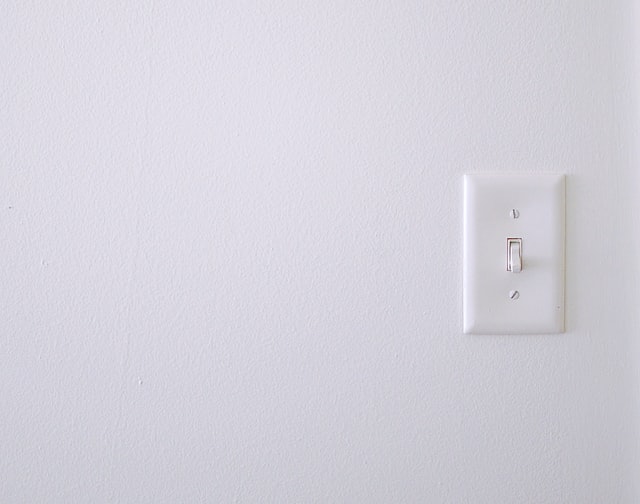Do you ever have those arguments in your household about leaving the lights on?
Teenagers are often the worst for it, often not caring about energy consumption and wanting the lights left on even when it’s a sunny day.
It can devolve into a game of constantly switching your LED bulbs on and off as you fight over it, but is that bad for the operating life of the lights?
Turning LED light bulbs on and off will shorten their life, because you’re putting undue electrical stress on the capacitors. It’s a common misconception that LEDs can be switched on and off without consequence.
In this guide, I’ll explain:
- Why it’s bad to flicker light bulbs on and off
- Whether turning lights on and off uses more electricity
- Whether it’s better to leave LEDs on or turn them off
Is It Bad To Flicker LED Lights On And Off?
Flicking LEDs on and off repeatedly causes the capacitors in the diode to charge and discharge too quickly. This electrical stress wears down the chip and can shorten the operating life of the LED bulb.
It’s not only the bulb – flickering lights on and off is also bad for the wall switch.
When current passes through the wiring in the circuit of the switch, it starts to heat the wiring. Then, when the current stops flowing, the wires begin to cool down.
When this is done too quickly, without giving the wiring enough time to warm up or cool up, the thermal cycle keeps getting reset, and it will end up damaging the wiring.
Does Flicking A Light Switch Blow The Bulb?
Because LED lighting doesn’t tend to blow suddenly and will instead gradually lose performance, flicking a switch on and off usually won’t cause LED bulbs to stop working suddenly.
It is possible to fry the bulb by constantly switching it on and off, but it’d be the result of faulty wiring causing constant quick surges of power. If the wiring is sound, you won’t suddenly blow the bulb.
That’s not the same with older bulb technology. You can cause traditional incandescent bulbs and fluorescent lights to blow by flicking them on and off, for different reasons.
Incandescent lights heat a filament to provide light – having it constantly hot and then cool down can cause it to break suddenly. Halogen lights use the same technology so they are also at risk.
Whereas with compact fluorescent lights and other fluorescent bulbs, there’s a power surge needed to turn them on. Flicking them on and off means more energy being used, and those constant surges can cause the bulb to pop.
The higher start-up voltage erodes the electrodes at the base of the bulb every time you use them too, so you’ll gradually wear them out faster.
Does Turning LED Lights On And Off Use More Electricity?

Turning your LEDs on and off won’t use any more electricity. LED lighting has the same power consumption for startup and for running, so you don’t increase your energy costs by flicking them on and off.
There is no initial surge with LEDs like there is with CFL lighting, so the on off operation won’t cause your electricity bills to shoot up.
Is It Better To Leave LED Lights On Or Turn Them Off?
Because LEDs are so energy efficient, there’s no huge difference to your energy bills if you leave them running or turn them off. If you’re in and out of a room, it’s best to leave the lights on instead of switching them on and off.
A general rule of thumb is that, if you’re leaving a room for 15 minutes or so, turn the lights off. This will help you conserve energy.
But when you consider how much energy light emitting diodes consume in a short space of time, it’s often better to preserve their lifespan and keep them on, instead of flicking them off and on every few minutes.
Although, you also need to consider heat. LEDs run warm and that heat is one of the bigger contributors to a shorter lifespan for your lights.
So, while it may be better to leave the lights on instead of constantly turning them off, make sure you are still switching them off for a prolonged period every now and then – at least every night when you sleep.
This will save wasted money on your energy bill, since there’s no energy consumed when you’re sleeping with the lights off, and it’ll allow the lights to cool down, avoiding thermal shock.
Final Words
The rapid switching on and off of a bulb will have an impact on an LED’s lifespan. With any kind of light bulb, turning lights on and off just puts more stress on the components – it’s just a different component for each type of bulb.
With LEDs, it’s the capacitors that suffer, so try not to flicker that light bulb too much. Plus you could give yourself a headache having the ambient light changing all the time.
And you can always use my interactive calculator to work out how cost effective it would be for you to switch your lights off.
Looking for an LED bulb but not sure what type you need?
Check out my free bulb picker and select the right bulb within few clicks.



